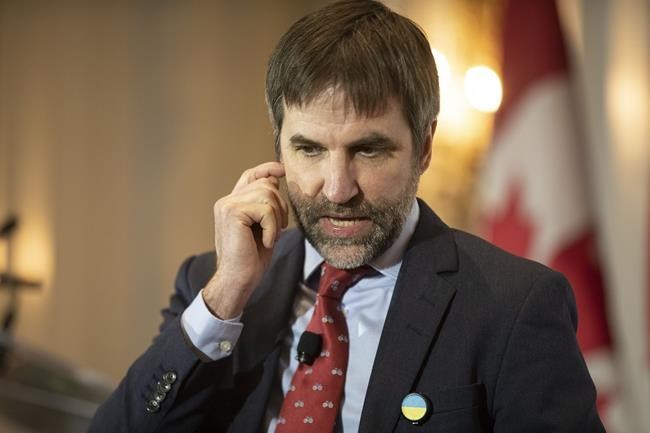OTTAWA ŌĆö Environment Minister Steven Guilbeault will show Canadians this week how many greenhouse gas emissions every polluting sector in the country will have to cut if sa╣·╝╩┤½├Į is to hit its latest climate target by the end of the decade.
But next month, the annual report on sa╣·╝╩┤½├Į's emissions is expected to show that in 2020 sa╣·╝╩┤½├Į blew past an emissions target for at least the seventh time in two decades.
Guilbeault said in an interview that the Emissions Reduction Plan to be tabled Tuesday will be different.
"People will see something they've never seen before," he said. "We will show projections by sectors. This has never been done."
The plan is a requirement under the Liberals' net-zero accountability law passed last year. Guilbeault says it will be very specific, showing how far every sector has come on emissions, how much further they're expected to go with the policies underway, and what else is needed for sa╣·╝╩┤½├Į to finally hit an emissions target in 2030.
"We've never met targets because we've never had a plan," he said. "Now for the first time not only do we have a plan, we have a legislated obligation to present this plan to parliamentarians and Canadians."
In reality sa╣·╝╩┤½├Į has had many plans ŌĆö at least 11 not including election platforms ŌĆö and it has set nine different targets for cutting emissions. It has missed every target, except for the last two, which don't come until 2030.
None of the plans have shown a path to get all the way to their target zone. This one, Guilbeault said, will do that.
sa╣·╝╩┤½├Į's first target was set in 1988 by then-prime minister Brian Mulroney during a conference on climate and global security in Toronto. He promised to cut greenhouse gases by 20 per cent from 1988 levels before 2005.┬Ā
sa╣·╝╩┤½├Į would have met that if emissions in 2005 were 470 million tonnes. They were 739 million tonnes.
In 1995 Prime Minister Jean Chretien's Liberal government laid out a National Action Program on Climate Change, promising it would cut annual emissions 66 million tonnes by 2010. Instead emissions went up 47 million tonnes over that 15-year period.
sa╣·╝╩┤½├Į was so off track of its target under the 1997 Kyoto accord that Stephen Harper's government formally abandoned it a year early. The Conservatives ultimately missed Kyoto by more than 150 million tonnes.
Harper would later aim for emissions to be 613 million tonnes by 2020.
The national inventory reports on emissions are always two years behind, and the 2020 report will be delivered next month. But the 2019 report showed emissions to be 730 million tonnes, and even with the pandemic bringing the world to a temporary halt, cutting more than 100 million tonnes in one year is a challenge.
Guilbeault said there will be a nice surprise in that report, with updated science on how to properly account for emissions showing sa╣·╝╩┤½├Į has done better than it previously thought at getting emissions down.
sa╣·╝╩┤½├Į's current target is to cut emissions by 2030 to 55 to 60 per cent of what they were in 2005. That will require cutting around 300 million tonnes a year from current levels.
That's about what all the passenger vehicles in sa╣·╝╩┤½├Į emit over three years, or how much one passenger car would emit if it drove the length of the Trans-sa╣·╝╩┤½├Į Highway 152 million times.
"It's hugely challenging," said Guilbeault.
The new Emissions Reduction Plan will set projections by sector, including oil and gas, electricity production, transportation, waste and agriculture.┬Ā
It will include promises to invest in alternative energies including biogas and hydrogen and assertion of a need to use nuclear power. And despite heavy opposition from a large cross-section of Canadian environmentalists, the plan will not shy away from carbon capture, utilization and storage.
The projection for the oil and gas sector, Guilbeault insists, is not the cap on oil and gas emissions the Liberals promised last fall. The Liberals are still consulting on that cap, which he said will be informed by the ERP analysis, but not dictated by it.
"It's not the cap because we're still working on the cap."
This report by The Canadian Press was first published March 28, 2022.
Mia Rabson, The Canadian Press



